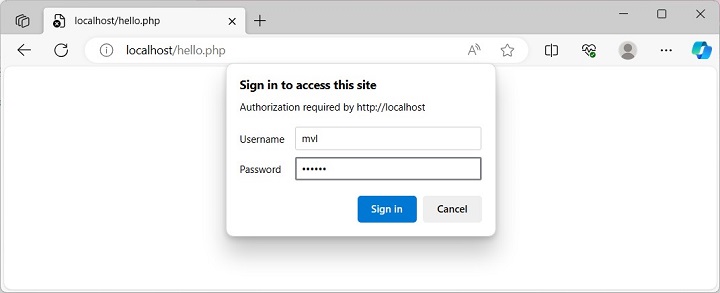In PHP, the header() function is used to send an “Authentication Required” message to the client browser causing it to pop up a Username/Password input window. In fact header() allows you to send any raw HTTP header.
header(string$header,bool$replace=true,int$response_code=0):voidThe string parameter is passed to the header() function. For example
header("HTTP/1.1 404 Not Found");It is used to figure out the HTTP status code to send.
You can also use header() function to redirect the browser to another URL.
Once the user has filled in a username and a password, the URL containing the PHP script will be called again with the predefined variables PHP_AUTH_USER, PHP_AUTH_PW, and AUTH_TYPE set to the user name, password and authentication type respectively. These predefined variables are found in the $_SERVER array. Only “Basic” and “Digest” authentication methods are supported.
<?php
/* Redirect browser */
header("Location: http://www.example.com/");
/* Make sure that code below does not get executed when we redirect. */
exit;
?>The optional replace parameter indicates whether the header should replace a previous similar header, or add a second header of the same type, and response_code parameter forces the HTTP response code to the specified value.
To be able to force he client authentication, you need a .htaccess file in document root folder. Open a new text file, put the following text in it, and save it with .htaccess as its name.
CGIPassAuth On
Example
An example script fragment which would force client authentication on a page is as follows −
<?php
if (!isset($_SERVER['PHP_AUTH_USER'])) {
header('WWW-Authenticate: Basic realm="My Realm"');
header('HTTP/1.0 401 Unauthorized');
echo 'User hits Cancel button';7
exit;
} else {
echo "<p>Hello {$_SERVER['PHP_AUTH_USER']}.</p>";
echo "<p>You entered {$_SERVER['PHP_AUTH_PW']} as your password.</p>";
}
?>Output
When you visit the script in a browser, it pops up a dialog box as shown −

Once you click on the sign in button, there may be a backend script to authenticate the login credentials. Once authenticated, two server variables will be created with the keys PHP_AUTH_USER and PHP_AUTH_PW, which can be verified with the output of phpinfo() function.

Leave a Reply